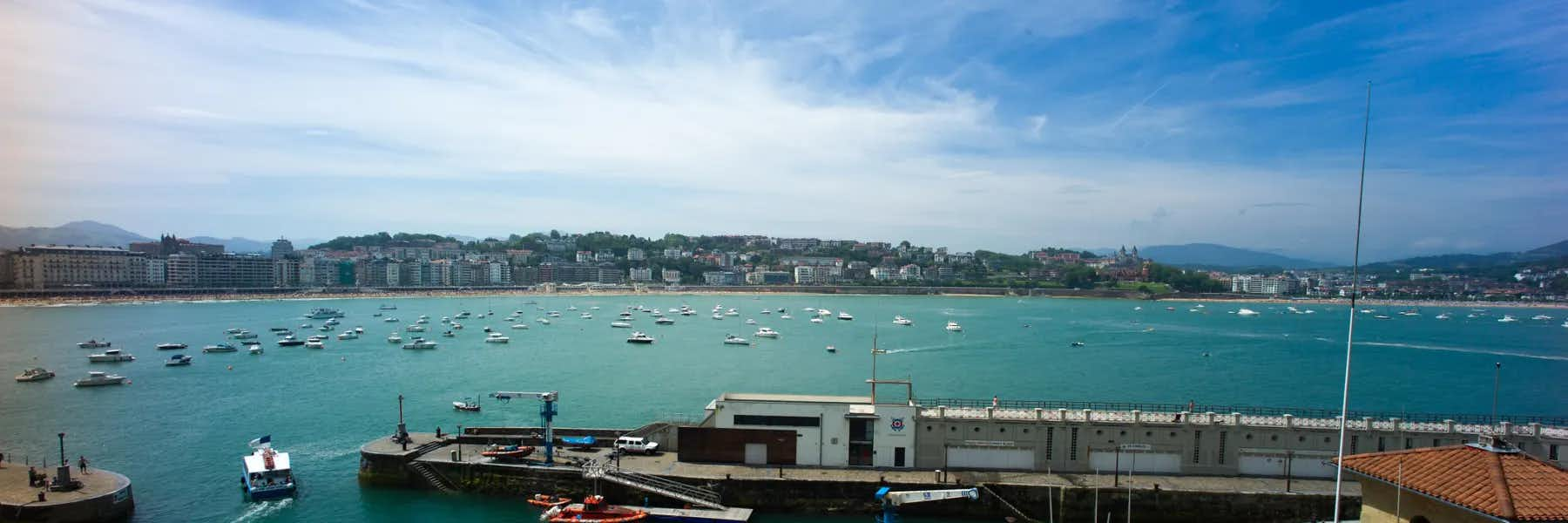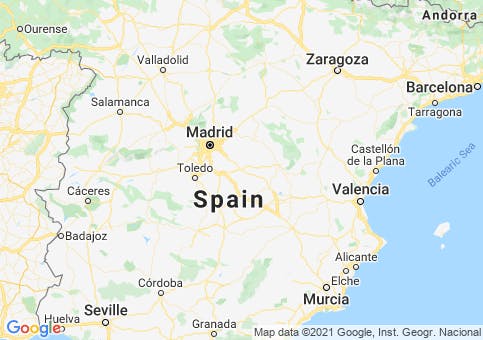By Marsha Scarbrough
There are dozens of reasons why expats are attracted by the prospect of moving to Spain — a rich and ancient history, romantic castles, fabulous cities, beaches, mountains, fiestas beyond number, succulent cuisine… Spain has it all. Yes, some beach resorts are overbuilt with concrete high-rises, but you can still find pretty seaside villages…and Spain off the beaten track is a revelation: a gracious, fulfilling, and traditional way of life that survives despite modern inroads.
Getting a Residency Visa for Spain
As a tourist, you can stay in Spain for 90 days, then you must be out of the entire Schengen Zone for 90 days before you can return. To live in Spain for more than 90 consecutive days, you will need a residency visa. Here are the different types available:
Student Staying Permit
Non-Lucrative Visa and Residency Permit (sometimes called Retirement Visa)
Employment Visa and Residency Permit
Self-Employment Visa and Residency Permit
Entrepreneur Visa and Residency Permit
Investor Visa and Residency Permit (also known as the “Golden Visa”)
Long Duration (Permanent) Residency Permit
Family Roots Visa and Residency (arraigo)
Digital Nomad/Remote Worker Visa is rumored to be in the works and should be in place sometime during 2022
The two most likely to work for you are the Non-Lucrative Visa/Retirement Visa and the Investor Visa/Golden Visa.
Non-Lucrative/Retirement Visa Requirements
$27,792 in a bank account per person or
Income from pensions and/or investments of $2,316 a month plus $579 a month for spouse/dependent child. (about $35,000 per year for a couple)
Income from rental properties or salaries is not accepted
Proof of private health insurance in Spain
Clean FBI report
Doctor’s letter
Consulates can add other requirements
Work anywhere in the world is not permitted
Must apply at Spanish Consulate in the U.S.
Get Your Free Spain Report Today!
Get Your Free Spain Report Today!
Learn more about the lower cost of living in Spain and other countries in our free daily postcard e-letter. Simply enter your email address below and we'll also send you a FREE REPORT — Live the Good Life in Sunny, Affordable Spain.

By submitting your email address, you will receive a free subscription to IL Postcards, Overseas Dream Home, The Untourist Daily and special offers from International Living and our affiliates. You can unsubscribe at any time, and we encourage you to read more about our Privacy Policy.
“Golden”/Investor Visa Requirements
Buy property in Spain valued at $500,000 or more
Residency for yourself, your spouse, and all dependent children
Permit to work in Spain included
Financial documentation, FBI report, and private health insurance required
$500,000 must be unencumbered/no mortgage
Purchase must be made within 90 days prior to the application
Can be more than one property
Can apply from the U.S. or while in Spain on a tourist visa
Because different consulates can have different requirements, you need to go to the website of the Spanish Embassy in Washington DC and determine which Spanish Consulate serves the location of your permanent residence in the U.S. Then, go to the website of that Consulate and print out their requirements and procedures for applying for the visa you want. Check back monthly because requirements can change.
Private Spanish Health Insurance
Both of these residency visas require you to buy private Spanish health insurance that fulfills certain requirements including no deductibles, no co-pays, and reparation coverage (having your body sent back to the U.S.). Even with all that, private Spanish health insurance is likely to be less than what you pay for Medicare, Medigap, and Plan D. The trick is that you have to buy this insurance before your visa is approved. Some companies require you to pay for a whole year in advance, others may permit you to pay monthly beginning with visa approval. Some companies do not accept new clients older than 75. Some companies don’t accept clients with certain pre-existing conditions. If you come up against one of these problems, google “Spanish private health insurance brokers”. Brokers know which company will accept what. Talk to a few brokers. You’ll find one who can help you.
Some private health insurers in Spain are:
Asisa, website: asisa.es/seguros-medicos
Mapfre, website: mapfre.es/seguros/particulares. The largest insurer in Spain.
Sanitas, website: sanitasexpat.com/. Note that Sanitas is a Spanish subsidiary of Bupa International.
Many international insurance companies actually have Spanish affiliates. Three of these are:
Allianz Insurance, website: allianz.es/seguros/seguros-de-salud.
DKV Seguros, website: dkvseguros.com.
Generali, website:generali.es.
In 2022, the cost of a policy that meets the visa requirements for a healthy 64-year-old couple living on the Costa del Sol was $272 per month from Sanitas, That’s $136 per month per person. The cost increases as you age.
After one year in most locations and after five years everywhere, you can apply to join Spain’s excellent public healthcare system. Because you haven’t been paying income tax in Spain your entire life, you will have to pay monthly to be part of the public system. If you are under 65, the monthly fee is $60. If you are 65 or older, it is $157
Taxes in Spain
If you live in Spain more than 182 days a year, you become a tax resident. Spain taxes you on your worldwide income at rates higher than U.S. rates. You must also continue to pay U.S. taxes. A treaty protects you from double taxation, so you pay your U.S. taxes, then you file your Spanish taxes. You deduct what you paid the U.S. from what you owe Spain, and pay Spain the difference. Spain also has a wealth tax on assets over $750,000 per person, but it is not applied in the communities of Madrid or Valencia. Spain taxes your capital gains, so sell your house in the U.S. before you move to Spain. Property taxes in Spain vary by community but are much lower than in the U.S. Be sure to check with a Spanish tax advisor before you make your move.
Getting a Driver’s License in Spain
Your U.S. driver’s license is only good for six months after you move to Spain. Getting a Spanish driver’s license can be expensive and challenging. You are required to attend classes in theory and take practical driving lessons no matter how much driving experience you have. You can take the written test in English, although the translation uses British terminology, but the practical test must be taken in Spanish in the instructor’s car with the instructor as a passenger on a manual transmission. Some locations allow automatic transmissions, but your license will be restricted to automatic transmissions. Consider this challenge in choosing the location where you want to settle. Spain’s cities have convenient public transportation that allows you to live without needing a car.
Vaccinations Required to Enter Spain
Coming from the U.S., you need to show proof of vaccination, a recovery certificate, or a negative test. You must fill in Spain’s Health Control Form (here’s the link www.spth.gob.es) with these details, and receiving a QR code to get through the airports. Either a PCR or rapid antigen test, taken within 72 hours or 48 hours before arrival respectively, are accepted.
Moving Your Pets to Spain
You can bring your dogs and cats to Spain easily if you follow international protocol. Your pet must be microchipped with a Euro-compatible microchip that can be read by EU scanners—that is, a microchip compatible with ISO standard 11784 or 11785. The microchip must be implanted before your pet’s rabies vaccination. Any rabies vaccination before the microchip is implanted doesn’t count, even if it’s still valid. The rabies vaccination must have been administered at least 21 days before travel. The first time you bring your dog or cat to Spain, you’ll need to get a bilingual health certificate valid for the European Union. (See link for the form here) This form will need to be filled out and signed/stamped by your state’s APHIS-VS area office. (This is the Animal and Plant Health Inspection Service.) The form must be completed within 10 days of your travel to Spain. You’ll need to accompany your pet yourself when you travel or send an authorized representative. Check your airline for restrictions and procedures. Once you are in Spain, you can take your pet to a Spanish veterinarian to get a European pet passport.
Get Your Free Spain Report Today!
Get Your Free Spain Report Today!
Learn more about the lower cost of living in Spain and other countries in our free daily postcard e-letter. Simply enter your email address below and we'll also send you a FREE REPORT — Live the Good Life in Sunny, Affordable Spain.

By submitting your email address, you will receive a free subscription to IL Postcards, Overseas Dream Home, The Untourist Daily and special offers from International Living and our affiliates. You can unsubscribe at any time, and we encourage you to read more about our Privacy Policy.
Finding Accommodation in Spain
To find a home to rent or buy, search on websites like www.idealista.com, www.fotocasa.com, or www.spotahome.com. If you don’t have good Spanish language skills, you can hire a relocation specialist to help you make appointments, go to the showings with you, and review the rental contract. Google “relocation specialists” in the location you want to settle. They can also help you get your empadronamiento and go to the immigration office with you. Their assistance is well worth the cost.
Banking in Spain
To pay for your housing and for life in general in Spain, you need a checking account with online banking. Not every bank in Spain will allow expats to open accounts, but one in your area will. Your relocation specialist will know which one and will take you there, or you can try to figure it out by asking around or inquiring on an expat Facebook group for your area. You should be able to open an account with just your passport before you have your residency card. If you have a brokerage account in the U.S., tell them you plan to move to Spain before you go. If they don’t want expat business, consider moving your account to Charles Schwab which has an expat department.
How to Move to Spain Checklist
Explore Spain. Take several scouting trips at different times of the year. You need to know where you want to settle in Spain before you put your plan in motion.
Renew your passport. Your visa will be in there, so you don’t want to have to renew it shortly after you arrive.
Change dollars to euros and move them into the Spanish checking account you will open.
Gather your documents and apply for your visa.
Research shipping companies and procedures if you plan to ship things. Paying for extra baggage on your flight is far cheaper than using a professional shipping company. Become a minimalist. Ship as little as possible. You can buy everything you need in Spain.
Once your visa is granted, you must move to Spain within 90 days.
When you arrive in Spain, you have 30 days to apply for your residency card at an immigration office. Your application includes all the same paperwork you submitted to the consulate for the visa plus your empadronamiento, which is a document issued by your local city hall that certifies that you are a resident in that community. To get that document, you have to show the city hall your lease or deed.
Find a place to live.
Things to Know About Living in Spain
Spanish people are friendly, and helpful, and love North Americans because we are exotic to them. Even if you don’t speak Spanish, a few words can be helpful: por favor (please), gracias (thank you), perdón (excuse me), no entiendo (I don’t understand). However, most Spanish people speak some English, especially those 30 and under, and those who work in tourist areas. They often like to practice their English with you.
Climate in Spain
Spain’s climate is mixed: Northwestern, green Spain, which borders the Atlantic, has cool summers, with fairly heavy rainfall in winter. The region is mountainous, with hills sometimes coming right down to the sea—the chilly waters of the Bay of Biscay, warm enough for swimming only in summer. But “green Spain’s” temperature range is not extreme: If a cool, year-round climate like that of Oregon appeals to you, then you’ll like this region.
Spain’s interior has a continental climate of hot, dry summers and cold winters. Temperatures may soar to the 90s F (occasionally even higher) in summer and drop to freezing in winter.
Moderate, cloudy conditions, with spring and autumn rainfall, are typical on the eastern, Mediterranean coast. The Balearic Islands have cool, wet winters and warm, dry summers, while the Canary Islands, off the African coast, have a more tropical climate.
Getting to Spain
The Spanish national airline, Air Iberia, offers flights from many U.S. cities like New York or Miami to Spain (Madrid, Barcelona, the Canary Islands, and more). Many other airlines based in the U.S. go to Spain, as well.
In addition, numerous budget airlines fly to and from Spain from other destinations within Europe, as does Iberia.
Popular airports serving coastal regions include those of Valencia, Alicante, and Malaga, along the Mediterranean coast; the airport in Jerez de la Frontera, serving Cadiz and the southern Atlantic coast west of Gilbraltar; and Bilbao and Santander, along the northwest Atlantic coast.
Language in Spain
Away from the popular Costas, English isn’t as widely spoken as you might expect. Spanish fluency is not a prerequisite for moving to Spain, but you will want to learn some of the basics. And if you choose to live away from the Costas, you will need reasonably good Spanish to manage comfortably. Real estate agents will happily give you property listings, but with a focus on local interests, they can afford to ignore the language skills needed to attract international clients.
Though Spanish is the most useful language to know for Spain, keep in mind that it’s not the only language spoken there. Most people in Catalonia, for instance, prefer to speak their native Catalan, while a good third or more of those in the Basque Country, on Spain’s northern Atlantic coast, speak Basque as their first language. Gallego is spoken in Galicia, in the far northwest, and Valenciano in the Community of Valencia (the provinces of Valencia and Alicante). While all Spaniards do speak Spanish fluently, street and shop signs are often in the local language in these regions.
Popular Places to Move to in Spain
Moving to Barcelona
A thriving hub of fashion, culture, dining, and sports; Barcelona represents the highest standard of big-city living in Europe. Spain’s spruced-up second city has a 24-hour lifestyle and is popular for weekend breaks with Europeans.
Moving to the Costa Brava
Situated between the snow-capped Pyrenees and the Mediterranean, the picture-postcard province of Catalonia boasts Spain’s most spectacular coastal scenery–the Costa Brava. The name means “Wild Coast,” and it’s a ruggedly beautiful place of pine-covered cliffs and secret coves.
Moving to the Costa Blanca
The Mediterranean coast between the cities of Valencia and Alicante is sunny and warm for much of the year and filled with small beach communities. Valencia, Spain’s third-largest city, offers big-city style with beach on the side. Alicante is more obviously a beach-tourism city…yet walk just a few blocks inland and you have a traditional Spanish city, village-style friendliness included.
Moving to Málaga
Hub of the Costa del Sol, the ancient port city of Málaga is less than 100 miles from the North African coast. With a lively, pedestrianized city center and plenty of museums, shops, and Moorish ruins, Málaga offers a year-round sunny, warm climate and surprisingly affordable living. With its international airport and fast rail connections, it’s also very accessible.
Rural Andalusia
For a taste of a more authentic Spain, the hills behind the Costa del Sol’s busy resorts and golf course condominiums turn up plenty of treasures. Magical places to go house-hunting include the 31 towns and villages of the mountainous Axarquia area, high in the foothills above Malaga.
Moving to Granada
Baking under Andalusian skies, Granada pleasantly taps into the emotions as well as the senses. It bridges the worlds of Islam and Christianity, meshing together Jewish and Gypsy traditions along the way. With the Sierra Nevada mountain range as a backdrop, it’s difficult to envisage a more dramatic setting for a city or a sultan’s palace. And most foreign buyers are impressed by the “wow factor” of Granada’s compact center.
Get Your Free Spain Report Today!
Get Your Free Spain Report Today!
Learn more about the lower cost of living in Spain and other countries in our free daily postcard e-letter. Simply enter your email address below and we'll also send you a FREE REPORT — Live the Good Life in Sunny, Affordable Spain.

By submitting your email address, you will receive a free subscription to IL Postcards, Overseas Dream Home, The Untourist Daily and special offers from International Living and our affiliates. You can unsubscribe at any time, and we encourage you to read more about our Privacy Policy.















